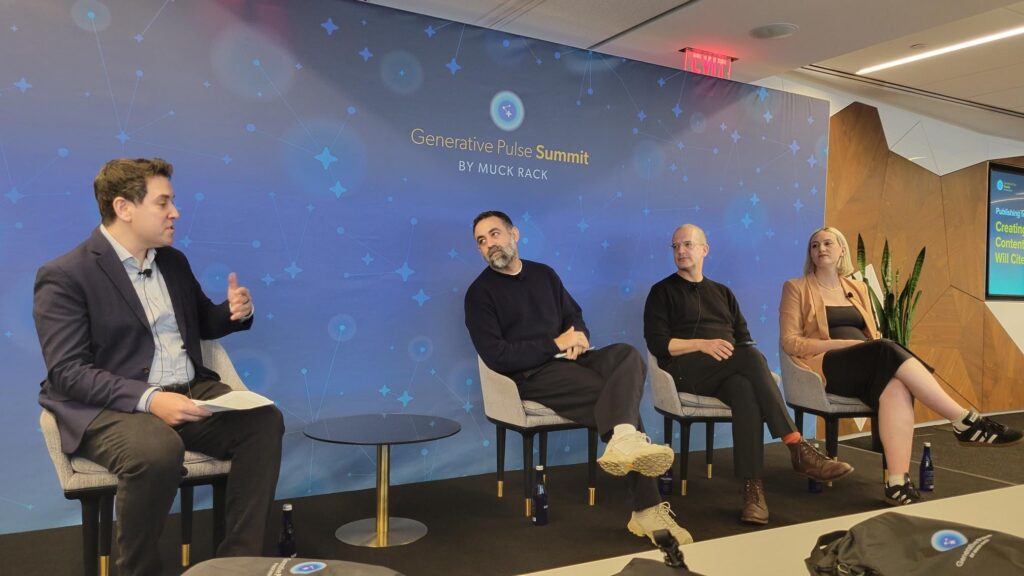Should we blame the government?
Or blame society?
Or should we blame the images on TV?
NO! Blame Canada!
– Trey Parker and Marc Shaiman
Before you ask, no, I’m not trying to incite our neighbors to the north just in time for the Direct Marketing Association’s fall conference in Toronto. But these lyrics – from the “South Park” movie – seemed like an appropriate jumping-off point to talk about just who is responsible for the public’s perception of direct marketing. In the cartoon, parents of children in the town of South Park, CO decide the responsibility for their children’s behavior can’t possibly rest on their shoulders, so it must be someone else’s fault. Logically – “South Park” logically anyway – they place the blame on the country that produced a movie full of foul language their kids loved.
Direct marketers often look for their own “Canada” when it comes to pointing a finger at why the public says it hates DM. A favorite candidate is the media, which for better or worse does indeed play a large part in shaping the public’s view. (For more on this topic, see “Beat the Press,” page 121.)
Why do reporters like to go after direct marketing? Do they really have a deep-seated, vindictive hatred for the industry?
Nah. It’s much simpler than that.
Direct marketing is a hot button, an easy target. Hey, everybody hates telemarketing and junk mail, right? What a great idea for an editorial! When you’re on deadline, nothing makes the hunt for something to fill that white space between the ads simpler than an easy target.
As an editor for the direct marketing trade press – with deadlines and white space of my own to contend with – I could take the easy way out. I could spend the rest of this column railing against the demons of the consumer media and how they don’t take the time to understand the complexities of the business and they’re out to get us, blah blah blah.
But rather than staying on the defense, let’s go on the offense. The direct marketing industry isn’t helpless. There are lots of things we can do to help improve DM’s image.
Bob Cargill, president of the New England Direct Marketing Association, makes a terrific suggestion especially suited to all the wonderful copywriters this industry employs. Speak up in print: When you see an article unjustly slamming the industry, write a letter to the editor.
I can tell you with authority that publications love getting letters, good or bad. They show someone actually read an article and got so riled up about it they had to respond. (And on the practical side, they fill space on slow news days.)
The DMA has done quite a bit to revitalize DM’s image in the public’s eye. Privacy Promise – which requires that DMA members who market to consumers use the mail and telephone preference services and honor opt-out requests; the “shop at home” PR campaign; and its consumer information Web sites (www.shopthenet.org and www.cybersavvy.org) are all commendable efforts.
Be Forthcoming The industry should follow the DMA’s lead and not be afraid to give consumers information about direct marketing when they ask.
Come clean. If people ask how a list is compiled, tell them. If consumers want to know what data a company has on file about them, tell them.
The industry traditionally has feared consumers potentially freaking out if they got a chance to pull back the curtain and see the wizard. This attitude has backfired. People by nature fear what they don’t know, and foes of direct marketing have used this ignorance as power.
Don’t take it for granted that consumers don’t know what’s going on or don’t understand the complexities of direct marketing just because you haven’t opened up. Thanks to the Internet, I’d venture many consumers realize they don’t have to wait for the press to cover a company they’re interested in. They can just go online and check out the firm’s Web site, or log on to PR Newswire and read press releases.
If you take one idea away from reading this column, take this: Don’t be afraid of the media.
Having an open door will go a long way toward helping the press present a balanced view of the direct marketing industry. So next time a reporter calls asking for an interview or a quote, return the call. The media can’t give your side of the story if you won’t tell the tale.
Talk to the press. An honest, straightforward quote is much better than silence.
As a reader, a consumer and a journalist, I’ll leave you with this thought, echoed by PR consultant Lisa Hahn in our “Beat the Press” feature: Nothing hangs more ominously in print than “No comment.”



